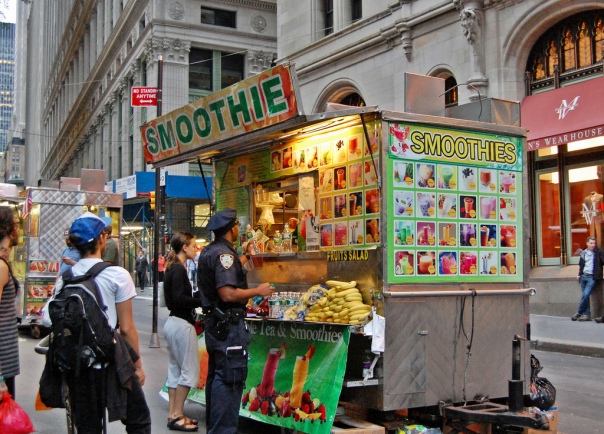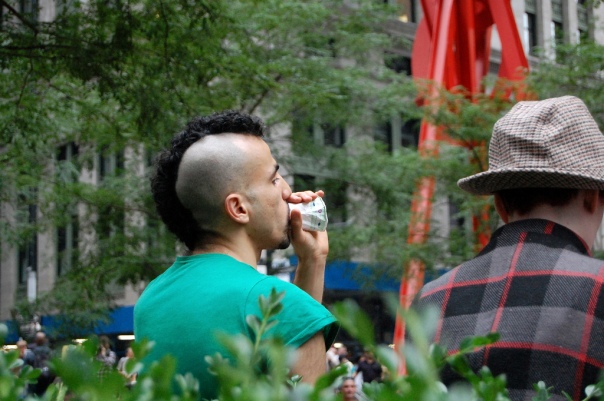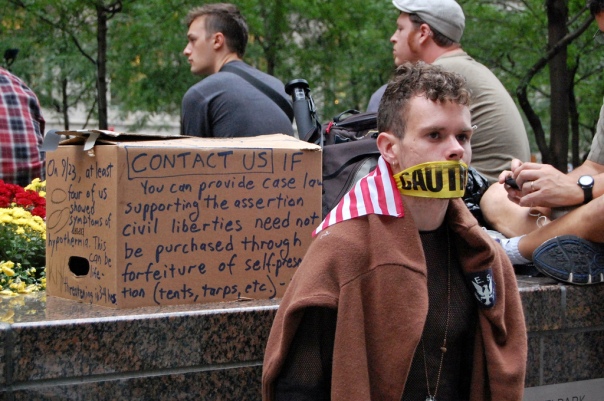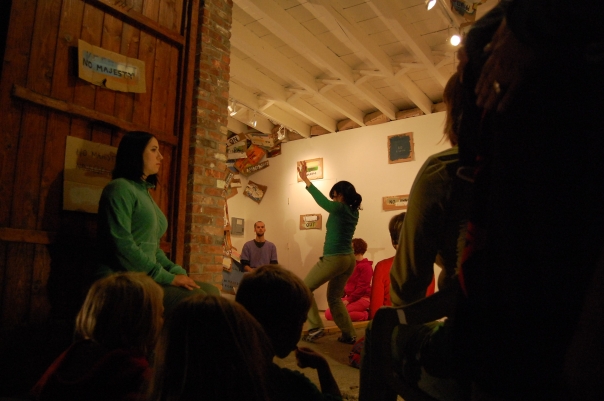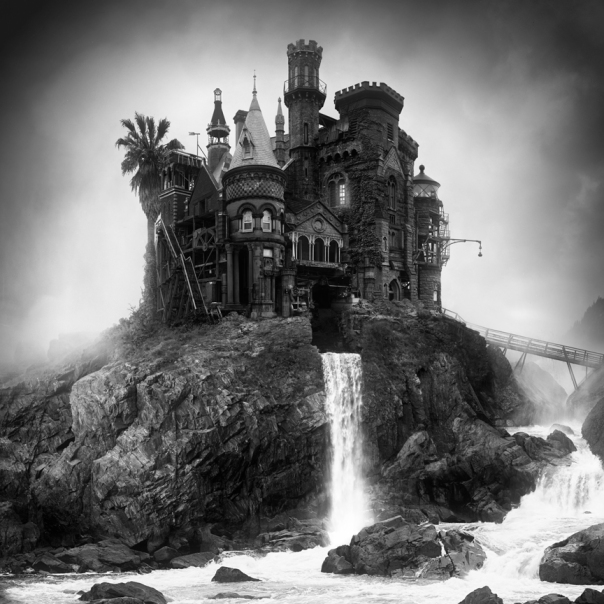Monthly Archives: September 2011
We Take for Granted Many of our Liberties – Occupy Wall Street, Day 12
One-day protests come and go, usually without much notice. In our world of continual distraction, these things are easy to gloss over – especially in the hands of an apathetic media. The strategy of indefinite occupation is far more effective – it is designed to create ever-increasing involvement and solidarity. As the word spreads, the movement is moving beyond fringe groups. This week has seen the picketing of postal workers and pilots’ unions before the steps of the New York Stock Exchange:
Today was the 12th day of the Occupy Wall St movement and it is growing in strength and in numbers, not just in New York anymore, but all over the country and world. (http://occupytogether.org/)
The optimism and determination at the Zuccotti Park encampment is fueled by this progress. It is palpable as you walk around- scattered about are small groups talking policy, tactics, by-laws, etc. Organization is being organized. Along Broadway, demonstrators appeal to the rush-hour crowds. Makeshift cardboard signs line the perimeter of the park – attracting tourists, shoppers, and businessmen – some of whom express support, others of whom have many questions, and, of course, those who pass with mocking laughter. The weather has been weirdly summer-ish; but more humid rain is coming – tarp-lined beds are being set up.
At the other end of the park, drummers and various other musicians have assembled in an improvisatory canon resembling the Terry Riley classic “In C”
And in true NY entrepreneurial spirit, a number of food carts have set up along the edges of the square – In a weird comingtogether, both protester and police have lined up to partake of their offerings.
The movement has attracted a number of high-profile figures, including Immortal Technique
Protest movements have always attracted harsh criticism and cynical mockery. People do not like their boats to be rocked. It is very easy to forget that many of the rights we enjoy come from a similar voice as that of the current expressions. Both the Progressive era of 100 years ago and the Civil Rights movement of 50 years ago attracted their fair share of scorn in their day. However – their outcomes are now a part of common American life.

This flag is pretty much the Revolutionary flag of Ethan Allen's Green Mountain Boys http://www.virtualvermonter.com/history/greenmtboys.htm
From the stalwart of rugged individualism that was Theodore Roosevelt, the progressive, come these:
“A typical vice of American politics is the avoidance of saying anything real on real issues.”
“The things that will destroy America are prosperity-at-any-price, peace-at-any-price, safety-first instead of duty-first, the love of soft living, and the get-rich-quick theory of life.”
“The liberty of which Mr. Wilson speaks today means merely the liberty of some great trust magnate to do that which he is not entitled to do. It means merely the liberty of some factory owner to work haggard women over-hours for under-pay and himself to pocket the profits. It means the liberty of the factory owner to close his operatives into some crazy deathtrap on a top floor, where if fire starts, the slaughter is immense….We propose, on the contrary, to extend governmental power in order to secure the liberty of the wage workers, of the men and women who toil in industry, to save the liberty of the oppressed from the oppressor. Mr. Wilson stands for the liberty of the oppressor to oppress. We stand for the limitation of his liberty not to oppress those who are weaker than himself” also T. Roosevelt (1912) http://historymatters.gmu.edu/d/5722/
More info: https://occupywallst.org/
More photos: http://www.flickr.com/photos/mattron/sets/72157627754699192/
Occupy Wall Street, Day 9
In the last post, I wrote about the Equitable Building, the gargantuan block of a building looming over the narrow streets of Lower Manhattan.
Incidentally this architectural landmark overlooks Zuccotti Park, the homebase of OccupyWallStreet, a major protest action that began on September 17 (“Constitution Day”) and is to continue indefinitely.
With the world economy flagging, unemployment soaring, and promises continually disappointed, this has been a year in which people around the globe are finally empowering their voices and actions to facilitate fundamental change. It is a movement of anger at the broken systems of the world, but also a movement with the optimism that reform is a real possibility. And for the first time in history, unhindered by the selectivity of mainstream media, the world is truly watching itself. Earlier this year, we watched how the power of numbers and connections brought revolution to the Middle East, and the spirit of the Arab Spring is spreading to all countries.
In the United States, we’re experiencing pervasive unemployment, extreme debt, and the increasing inability for a huge portion of the population to sustain a decent quality of life. The OccupyWallStreet movement aims to represent the “99%” of Americans whose government, financial system, and wealth are determined by the remaining one percent.
Even the mainstay of the “American dream”, the middle-class, has been increasingly degraded. Decades ago, one could live a modest life in this country and still be able to own a small chunk of the earth. Under the current system of politics and business, this has become increasingly impossible for many of us. In a democracy, everyone must contribute their fair share to the functioning of society. It is evident that most of America is paying a greater share than those in control, those with the most influential wealth- wealth which is concentrated on Wall Street
And so for this, and many other related issues, OccupyWallStreet aims to hunker down in Lower Manhattan, draw as much awareness and support as possible, and present to the nation and world a basis and philosophy for change and a better society. There is great patriotism here, and the wish to return to the core principles and ideals of the Constitution – a nation truly governed by the people.
The occupied Zuccotti Park (just blocks from the NY Stock Exchange, which itself has been cordoned off to anyone except employees) is a city within a city- with a library, a media center, a “kitchen” which serves free food, a medic, and people sweeping and taking care of garbage. Sympathetic local businesses have allowed the use of their bathrooms (and of course appreciate the extra income). The occupiers meet periodically to rally and discuss policy, and at night sleep on the hard pavement, often in the rain. This is all under the watchful eye of the NYPD, which on Saturday overstepped decency with a number of arbitrary arrests and abuses, including the unwarranted pepper spraying of a woman already enmeshed in a net. And this sorry episode:
OccupyWallStreet is explicitly non-violent and the police response was criminally heavy-handed.
Day 9 of the occupation was far more quiet, the police kept their distance, and the vibe of a subdued Sunday afternoon took hold. It’s hard to say what the immediate future will hold, but it is clear that more and more Americans are starting to think outside of the broken, stalled-out Republican/Democrat system of false promise and self-interested money grabbing.
As we’ve seen in American history, democracy sometimes needs a little shaking-up in order to work for all.
For more: https://occupywallst.org/
More pictures of Day 9: http://www.flickr.com/photos/mattron/sets/72157627754699192/
#occupywallstreet on Twitter
The Equitable Building
Looming over Lower Manhattan on Broadway, near Wall St., 1915’s Equitable Building symbolizes a turning-point in high-rise construction and urban zoning.
Incredibly, the New York skyscraper was born on the narrow 17th century streets of Lower Manhattan. As each new tower went up around the turn of last century, more and more sunlight became obscured from the ground- much to the horror of citizens who were grappling with this type of architectural scale for the first time in history. To this day, in fact, some streets here have not seen direct sun in a century.
The Equitable Building so obscured Broadway that a public outcry resulted in changes in zoning law which required tall buildings to have setbacks. This helped usher in the sleek, “pointy tower” Art Deco era of the Empire State and Chrysler Buildings.
Incidentally, the Equitable Building contained more office space than any other building in the world until the opening of the Empire State in 1931.
This past Saturday at the Open Source Gallery
Of course, one of the best things about the city is stumbling upon the unexpected. Brooklyn is rife with random finds. Among many other chance encounters, I’ve ran into raging warehouse parties, and even costumed “headless” horsemen trotting down dark residential streets.
This past Saturday, on an afternoon wander through Park Slope, we came upon an open garage on 17th Street that was adorned with the art of James Leonard, an exhibition entitled “927 Days at Sea”
Later on, in the refreshingly clear early-autumn night, there was a dance performance, “if you look up”, by Anna Azrieli. A modest audience gathered on the sidewalk in front of the garage, which was a beacon of light along an otherwise dark block overlooking the Prospect Expressway. The piece was serene and silent, focused on exploring the relationship between the subtle and strong energies of movement. Most of the performers moved softly and expectantly while a lone dancer became increasingly drawn into confident and broad motion.
There is something rare and amazing that sometimes happens in these moments. Everyone was completely quiet, from the kids sitting on the ground to the rest of us drinking beer, and in this humble garage on this dark street, with the hum of the nearby highway, there was a certain unspoken coming-together.
The Open Source Gallery hosts a multitude of performances and exhibitions and has been on the Brooklyn scene since 2008. Remarkably, the community surrounding the gallery has rebounded from a fire which last November completely destroyed their original home.
Check them out here: http://open-source-gallery.org/
The Fantastic Photography of Jim Kazanjian
DEFINITELY worth a peak: The fantastical architecture photography of Jim Kazanjian
Here’s a tiny taste- see more and read the full article at Architzer Blog:
Sacred Harp and Idumea
“And am I born to die? To lay this body down…”
The sacred harp, a musical instrument bestowed to us by Creation – our human voice.
The concept is at the core of a capella shape-note singing- a distinctively American way of music – this idea that the gift of the voice is heaven-sent and connects us to the divine. With roots in the early 19th century, it was among the first styles of music distinct enough to be unique to the New World. Today it is quite common around the country, but nowhere else more than in its home, the Southern United States.
Shape-note singing is so called because of its notation – to facilitate ease of reading, certain pitches receive a shape that distinguishes them from other notes.
Shape-note singing is an expression of the Sacred Harp. There is more to it than just singing music. Especially in the rural South, the Sacred Harp is way of spirituality and community. There is no audience – each of the four sections face each other in a square. The person leading is constantly changed-up. Technique of singing is far less important than the coming together of voices. Interpretations and embellishment of hymns are passed on aurally to the next generation.
The Sacred Harp is a great example of early America’s quest for a more perfect interpretation of Christianity and society – ideas that are still at the core of this country’s nature.
The raw open harmonies and age-old melodies tear at the soul- they make an intense prayer- sometimes ecstatic, sometimes apocalyptic.
“Idumea” (number 47b of The Sacred Heart Hymnal) has to be one of the most chilling examples of shape-note singing. A powerful confrontation with mortality and the transitory nature of existence.
To lay this body down!
And must my trembling spirit fly
Into a world unknown? A land of deepest shade,
Unpierced by human thought;
The dreary regions of the dead,
Where all things are forgot! Soon as from earth I go,
What will become of me?
Eternal happiness or woe
Must then my portion be! Waked by the trumpet sound,
I from my grave shall rise;
And see the Judge with glory crowned,
And see the flaming skies!“
Look who’s a Brooklyn tour guide!
Vayable is a great way to discover new places and find unique experiences. They operate all over the world and connect people with guides that have expert knowledge of a particular area or activity.
I recently became one of their guides and offer two Brooklyn neighborhood tours: Williamsburg and Park Slope/Carroll Gardens
Brooklyn is more spread-out than Manhattan, and is more off-the-radar. This can cause a visitor to feel intimated by the borough. These tours are a great way to discover some of the most dynamic neighborhoods in New York City, and are a wonderful way to orient oneself for further exploration.
These tours are NOT just for visitors! Locals too can learn more about own their neighborhoods and what makes them truly unique.
If Brooklyn were separate from the 5 boroughs, it would be the 4th largest city in the U.S.. Cast off the glitz of Manhattan and check it out!
The Crappiest Cameras of the Digital Age
Check it out:
http://www.onefive4gallery.com/#!__crappiestcamerasofthedigitalage
– A feature I wrote. Cool site too…



